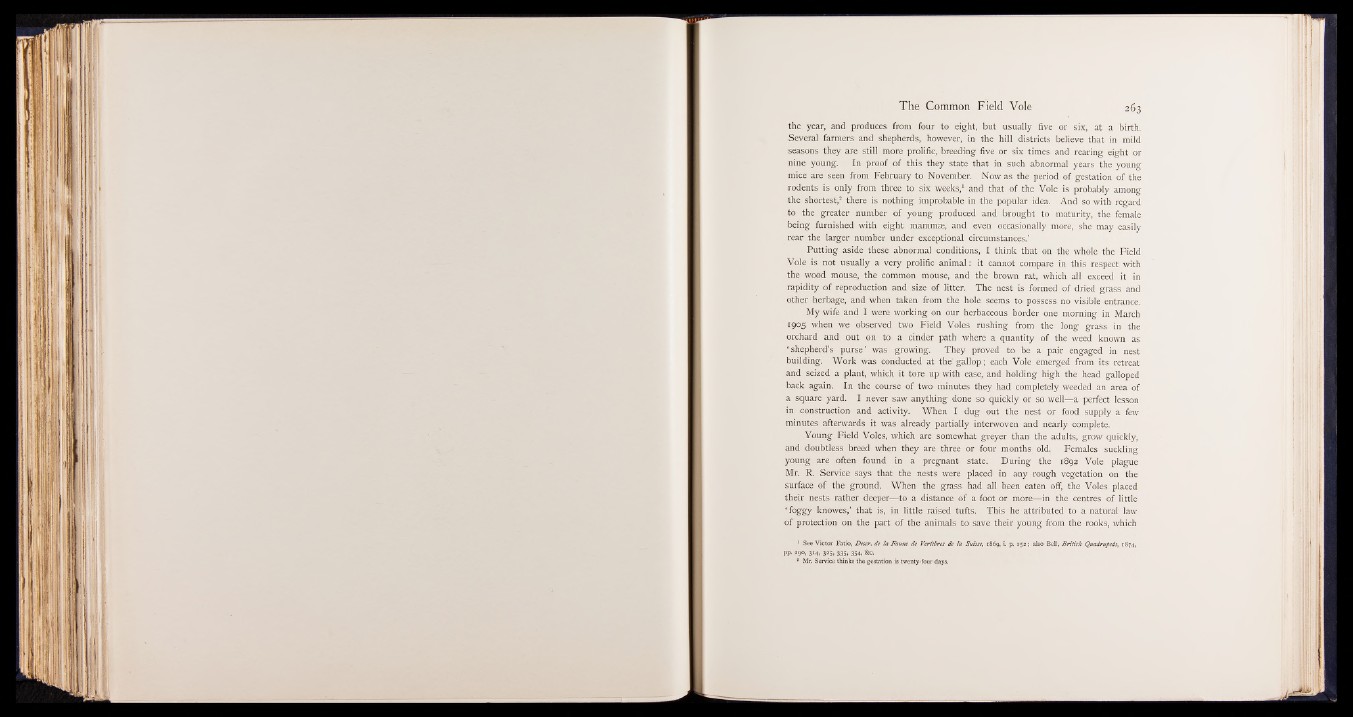
the year, and produces from four to eight, but usually five or six, at a birth.
Several farmers and shepherds, however, in the hill districts believe that in mild
seasons they are still more prolific, breeding five or six times and rearing eight or
nine young. In proof of this they state that in such abnormal years the young
mice are seen from February to November. Now as the period of gestation of the
rodents is only from three to six weeks,1 and that of the Vole is probably among
the shortest,2 there is nothing improbable in the popular idea. And so with regard
to the greater number of young produced and brought to maturity, the female
being furnished with eight mammas, and even occasionally more, she may easily
rear the larger number under exceptional circumstances.’
Putting aside these abnormal conditions, I think that on the whole the Field
Vole is not usually a very prolific animal: it cannot compare in this respect with
the wood mouse, the common mouse, and the brown rat, which all exceed it in
rapidity of reproduction and size of litter. The nest is formed of dried grass and
other herbage, and when taken from the hole seems to possess no visible entrance.
My wife and I were working on our herbaceous border one morning in March
1905 when we observed two Field Voles rushing from the long grass in the
orchard and out on to a cinder path where a quantity of the weed known as
‘ shepherd’s purse’ was growing. They proved to be a pair engaged in nest
building. Work was conducted at the' gallop; each Vole emerged from its retreat
and seized a plant, which it tore up with ease, and holding high the head galloped
back again. In the course of two minutes they had completely weeded an area of
a square yard. I never saw anything done so quickly or so well—a perfect lesson
in construction and activity. When I dug out the nest or food supply a few
minutes afterwards it was already partially interwoven and nearly complete.
Young Field Voles, which are somewhat greyer than the adults, grow quickly,
and doubtless breed when they are three or four months old, Females suckling
young are often found in a pregnant state. During the 1892 Vole plague
Mr. R. Service says that the nests were placed in any rough vegetation on the
surface of the ground. When the grass had all been eaten off, the Voles placed
their nests rather deeper—to a distance of a foot or more—in the centres of little
‘ foggy knowes,’ that is, in little raised tufts. This he attributed to a natural law
of protection on the part of the animals to save their young from the rooks, which
1 See Victor Fatio, Descr. de la Faune de Verthbres de la Suisse, 1869, i. p. 15 2 ; also Bell, B ritish Quadrupeds, 1874,
pp. 290, 314, 325, 335, 354, &c.
2 Mr. Service thinks the gestation is twenty-four days.